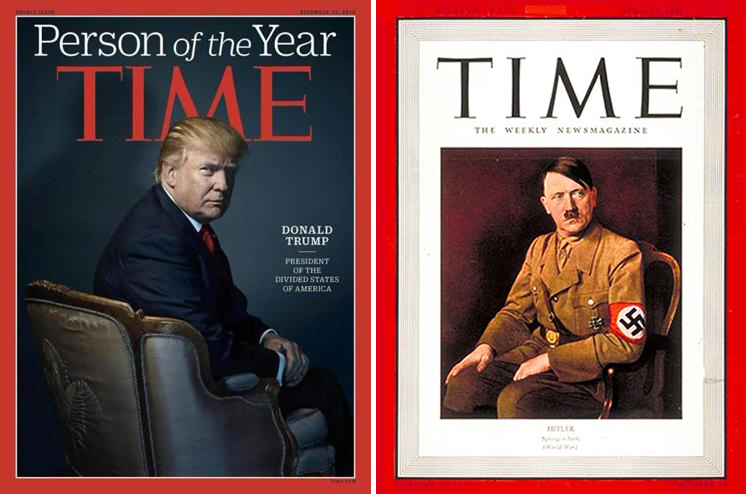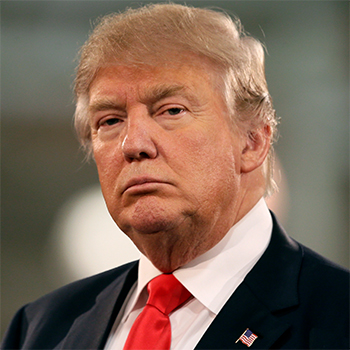
The Galerie St. Etienne was founded in 1939 by my grandfather, Otto Kallir, who fled his native Austria after it was annexed by Hitler. From 1940 onward, Kallir ran the gallery together with Hildegard Bachert, a refugee from Nazi Germany. After my grandfather died in 1978, Hildegard and I continued to explore the legacy of European fascism, deepening our involvement with the restitution of art looted during the Holocaust, and expanding our engagement with the German art of the Weimar period. Our current exhibition, “You Say You Want a Revolution: American Artists and the Communist Party” (through March 4), brings an American perspective to the political and economic stresses of the interwar period.
Planned when the 2016 presidential campaign was just beginning, “You Say You Want a Revolution” examines the parallels between the current scene and America in the 1930s. Like most New Yorkers, we did not imagine Donald Trump would win this election. We don’t think Trump is Hitler, or that we are living in a latter-day version of Weimar Germany. Nevertheless, we do believe that this is a moment of historical crisis comparable to the 1930s. The similarities and the differences between that decade and our own are instructive.
- Shifts in the Global Balance of Power
In the early twentieth century, the decline of the Ottoman, Austro-Hungarian and Russian Empires (none of which survived World War I) created a power vacuum that inflamed competition among Germany, Great Britain and France. After World War II, the United States emerged as a global hegemon and maintained relative international stability throughout the Cold-War years. However, the end of the Cold War has seen rising geopolitical challenges from Russia and China, as well as major volatility in the Middle East.
- Make Germany Great Again
Many Germans felt that they had been cheated of their chance at greatness by the punitive reparation payments imposed upon them after World War I. Although America today is by no means a defeated nation, there is a pervasive fear that our best days as the dominant superpower may be behind us.
- Structural Economic Changes
Over the course of the nineteenth century, industrialization gradually supplanted a largely agrarian economy. The consequent social crises—rural impoverishment, mass migration to the cities, the growth of slums, unemployment, homelessness, brutal strikes and battles over working conditions and wages—had reached a peak by the 1930s. Ultimately, however, the new factories were able to absorb most of the displaced agricultural workers. Unionization and regulation not only ameliorated the hardships of factory work, but laid the foundation for the growth of the middle class.
Starting in the 1980s, both Republicans and Democrats embraced free-trade policies that globalized what was once American industry. No one paid much attention to the workers who were left behind, assuming they would find jobs in the new post-industrial economy. But the post-industrial economy requires a much smaller labor force than its predecessor. The replacement of American workers by those from lower-wage countries is a less significant long-term threat than automation. Service-sector jobs are less numerous and pay less than factory jobs. Union membership has declined, further undermining the job security and salaries of employees in all segments of the economy.
- Income Inequality
American income inequality peaked in the late 1920s, just before the Great Depression. At that time, 1% of the population earned 23.9% of the nation’s income. Subsequent New Deal policies helped even out this disparity by promoting worker welfare and regulating the financial industry.
Since reaching a low point in the early 1970s, income inequality has steadily risen. As of 2013, 1% of the American population earned 21.2% of the nation’s income. Democratic and Republican administrations alike have supported policies abetting this trend. The Glass-Steagall Act, enacted in 1933 to prevent commercial banks from engaging in securities speculation, was repealed under Bill Clinton in 1999. Decreases in the income, capital gains and estate taxes have disproportionately favored the rich. Trump’s anticipated policies—lower taxes, reduced regulation and the unraveling of our fragile social safety net (Obamacare, Medicare, Social Security)—are likely to further exacerbate income inequality.
- Divide and Conquer
Hitler was appointed chancellor of Germany in January 1933, but he did not receive a majority of the German vote. He came to power because his opposition was fragmented: the German Communists refused to work with the Socialists, whom they believed had sold out to business and the military. Recognizing belatedly that this strategy had been a mistake, Stalin began advocating a “Popular Front,” which would unite the proletariat with the bourgeois intelligentsia and secure the support of the Western democracies in the coming war against fascism. In the U.S., a parallel alliance between the working classes and liberal Democrats helped power the New Deal.
That broad Democratic coalition held sway until the 1960s, when it was gradually undermined by a shift to identity politics. While advancing the rights of select minorities, identity politics tended to focus energy on issues that were not directly relevant to the lives of many Americans. The Democratic base has by now been so finely sliced that even straight white males claim to be a persecuted minority. Trump’s tirades against “political correctness” resonate with these men and others who feel alienated by an increasingly multicultural world.
- The Politics of Bigotry
Sigmund Freud believed that bigotry is intrinsic to human nature. We affirm our own sense of identity by denigrating those we perceive to be different from us. In the 1920s, U.S. immigration quotas favored “whiter” Western and Northern European countries; African Americans were regularly lynched in the South; Jim Crow was the law. In the 1930s, Father Charles Coughlin’s anti-Semitic radio broadcasts drew audiences in the tens of millions. It is unlikely that the Roosevelt administration could have mustered public support for a war to save the Jews. It was far easier, after Pearl Harbor, to unite the country against the Japanese: an enemy more obviously alien than the Germans.
Hitler was motivated by a pervasive racist ideology that demanded the eradication of alleged Jewish influence, as well as other “un-German” minorities. Trump has no guiding ideology. For him, bigotry is less an end than a means. He cements his base by constantly shifting targets, creating a sense of unity even among members of groups (such as African Americans, Hispanics, women and Jews) who have been erstwhile subjects of attack. However, his most consistent attacks are leveled against Muslims, and his overarching theme is the global war on “Islamic terrorism.” Trump’s embrace of Russia (dubbed “the great white power” by the alt-right) and his incipient rejection of China suggest a desire to reconfigure American alliances along racial lines.
“The receptivity of the great masses is very limited, their intelligence is small, but their power of forgetting is enormous. In consequence of these facts, all effective propaganda must be limited to a very few points and must harp on these in slogans until the last member of the public understands what you want him to understand by your slogan.”
—Adolf Hitler, Mein Kampf
- The Rise of New Media
The mass media—the tabloid press, advertising and radio—initially came to the fore in the early twentieth century. The Austrian Karl Kraus was among the first to lambast these vehicles for their cynical manipulation of the truth, whether selling toothpaste or war. Hitler and Stalin immediately grasped the propaganda potential. George Orwell, in his novel 1984, presented the mass media as the ultimate totalitarian tool, a means of falsifying history and suppressing independent thought.
In part because of the specter of Nazi and Soviet propaganda, in part due to our tradition of a free press, the U.S. after World War II developed a more benign approach to media. Controlled access to relatively few outlets (three national television networks, mainstream newspapers and mass-circulation magazines) may have blunted criticism of the government and advertisers, but it facilitated the imposition of journalistic standards. The wide reach of these outlets allowed large-scale advertising, which supported accurate, labor-intensive reporting.
Over the last several decades, the postwar media model and its financial support structure have been progressively undermined, first by cable television and then by the Internet. Today’s new media have no barriers to entry, no generally accepted standards for assessing the truth. Trump and his supporters denounce what’s left of the mainstream media, while giving credence to stories fabricated in the nether reaches of the Internet. Our tweeter-in-chief is adept at blurring the lines between reality and “reality,” as exemplified by The Apprentice.
- The Reichstag Fire
In February 1933, the German Reichstag (parliament) was set on fire. Hitler blamed a Communist conspiracy, though some historians have argued that the Nazis themselves were responsible. The incident allowed Hitler to consolidate power and suspend civil liberties. The laws that deprived Jews of their livelihoods, property and eventually their lives were passed incrementally over the course of the ensuing months and years. It is important to note that everything the Nazis did was done under the cover of law. And Hitler proceeded in stages, testing the waters and then advancing when he saw there was no meaningful opposition.
The Weimar Republic, which lasted scarcely fourteen years, was Germany’s first democratic government. The United States has been a functioning democracy since 1776. The three branches of our government were designed to check and balance one another, in the hope that this would keep our public servants responsive to the citizenry and prevent the rise of an autocratic dictator. In the 1930s, the U.S. faced many of the same political and economic stresses that led to Hitler’s ascension in Germany. But the Roosevelt administration managed to enact legislation curbing capitalism’s most destructive excesses and safeguarding the welfare of the American worker. Eight years ago, the election of our first African-American president seemed to herald a milestone in our nation’s protracted battle against bigotry.
•••••
There are studies indicating that Americans are starting to lose faith in democracy. For years our national legislature has been ineffectual, beset by partisan bickering. Trump’s populist rhetoric notwithstanding, both the Republican and the Democratic parties are beholden to Wall Street and big business, and there is no indication that this is going to change anytime soon. Economic hardship breeds bigotry and demagoguery. The 2016 election reflects a widespread sense of betrayal on the part of the American people. We ignore this at our great peril.

